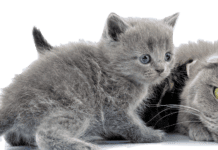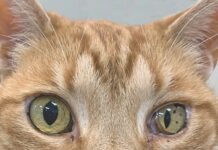Nutritionist Joseph Wakshlag, DVM, Associate Professor of Clinical Nutrition at Cornell University College of Veterinary Medicine, poses a question for owners: “If you knew that your cat would develop cognitive dysfunction at age 12, and if feeding him an antioxidant-enhanced diet would delay that development, wouldn’t you do it?”
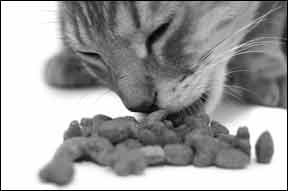
288
That scenario may be possible in the not-too-distant future. If scientists identify a gene for feline cognitive dysfunction — and a host of other diseases with genetic risk factors — individualized nutrition and lifestyle plans could be developed for cats based on their genetic tests. It has long been known that nutrition plays an important role in preventing and healing disease in humans, cats and dogs, but its role may be greater than we thought. Researchers in the pioneering science of nutrigenomics stand squarely at the intersection of genetics and nutrition.
Gene Mutation. “Nutrigenomics is the study of how nutrition affects the genes and their expression,” Dr. Wakshlag says. “We’ve now deciphered many animal genomes, including humans’, but we still don’t know exactly how to influence them. We do know that genes get expressed via a ‘promoter,’ which in turn is triggered by a variety of things. For example, you may have a mutation that causes a disease, but your diet—or even your mother’s diet when you were in utero—can influence the manifestation of that disease. So can your environment, exercise habits and even your brain use in certain neurologic diseases. The question we’re now asking is whether it is possible to delay the onset of diseases such as Alzheimer’s and diabetes —diseases that affect both humans and animals.”
The impact of nutrigenomics research on cat owners hasn’t really been felt yet, Dr. Wakshlag says. “Research on rodents has taught us certain things. For example, omega-3 fatty acids can beneficially influence how some genes are expressed by making the promoters more or less active. So can vitamin B12 and folate, and fat-soluble vitamins like D and A. But we already add healthy amounts of these nutrients to commercial cat food — regulations require that we do. So there’s actually not a lot of concern about whether cats are getting enough.”
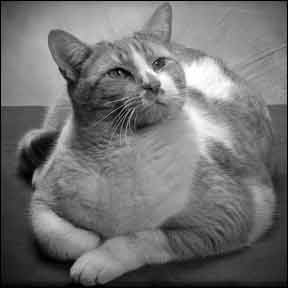
288
Is There a Fat Gene? Today, most nutritional research is obesity-related. “Because it’s the No. 1 health problem in dogs, cats and humans, such research is better funded,” says Dr. Wakshlag. “The research being done on humans sometimes crosses over to dogs and cats. The question remains as to whether there is a particular gene profile for obesity in dogs and cats—there is as yet no consensus on that.”
Osteoarthritis is also well studied, and the human research being done has crossover implications. At Cornell, surgical specialist Rory Todhunter, BVSc, Ph.D., is conducting cutting-edge research in this area, but primarily in dogs. “Our primary goal is having cats and dogs walk with less pain,” says Dr. Wakshlag. “Whether we can influence the genetic control of osteoarthritis with early intervention and diet is still to be determined.”
Pet food companies are leading the charge on nutritional studies, but having invested considerable research and marketing dollars on therapeutic foods, the companies aren’t particularly motivated to publish their findings. “The data they are collecting is proprietary, and they want to reserve the right to patent any potentially profitable products that may come of it,” Dr. Wakshlag says. “Unless there is a link to a related human arena, there’s not much funding for veterinary research at universities.”
Meanwhile, what can owners do to provide the best food possible for their cats and their cats’ genes? Some considerations:
Enhanced nutrients: It’s commonly believed that certain nutrient-enhanced pet foods — for example, those containing blueberries — are healthier because you can actually see blueberries and other whole foods on the label, Dr. Wakshlag says. “However, diets that contain many different kinds of fruits and vegetables tend to contain very little of each one. And I don’t believe that a few blueberries are enough to warrant a $10 increase in price per bag.”
Omega-3s: Cats can benefit from marine-based oils in their food because they can’t produce long-chain omega-3 fatty acids themselves like dogs and humans, Dr. Wakshlag says. “On the other hand, cats are also more sensitive to over-dosages of fish oil. And too much lipolic acid, ingested, for example, from over-the-counter human supplements, can kill a cat.
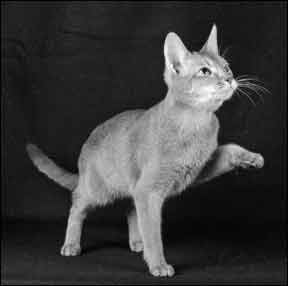
288
So just because it is good for you may not mean it’s good for your cat.”
Low-carb Diets: Some owners of overweight cats with type 2 diabetes have turned to low-carbohydrate diets. It’s a way to influence the glycemic index to an extent in diabetic cats, says Dr. Wakshlag. “That said, probably the best way to prevent feline diabetes is to get your cat a treadmill!”
Antioxidants: When cats with chronic illnesses like cancer are fed commercial therapeutic food, antioxidants are often a common additive. Antioxidants work by quenching free radicals — reactive oxygen molecules that can contribute to cell damage, which is one of the hallmarks of cancer initiation and malignancy, says Sally Perea, DVM, president-elect of the American College of Veterinary Nutrition and senior nutritionist at P&G Pet Care.
An example of an antioxidant is vitamin E, which prevents oxidation in lipids, or fats, Dr. Perea says. “Different enzymes such as glutathione act like antioxidants, too. Some elements, such as copper, zinc and manganese, help antioxidants function better, and selenium helps glutathione work.”
But antioxidants vary with animal species, Dr. Perea says. “For example, because cats can make their own vitamin C, they don’t need it as a supplement in their diet. And though beta carotene is not an antioxidant in humans or dogs because it is rapidly converted to vitamin A, it is for cats, who cannot efficiently make vitamin A from it. Added to a cat’s diet, it can help treat chronic kidney disease.”
There are many supplements for cats on the market that are antioxidants, including s-adenosyl methionine and the long-chain omega-3 three fatty acids in fish oil, but caution should be taken with cats. Not all over-the-counter supplements can be used safely, and before starting any supplements, checking with your veterinarian is a wise idea, Dr. Wakshlag says. “Fruits and vegetables can be used in small quantities if you find ones that your cat enjoys. Just make sure to avoid onions and garlic, as they can cause red blood cell problems.”
Home-cooking Trend. Some owners, wanting to know exactly what goes into their cats’ food, have turned to home cooking. Concerns about safety after pet food recalls have also spurred this trend. “An incident of salmonella contamination at a South Carolina pet food manufacturing plant this year affected 40 different brands of pet food,” Dr. Wakshlag says. If you’re considering an entirely homemade diet for your cat, consult a veterinary nutritionist to make sure it’s nutritionally balanced.
Dr. Wakshlag’s recommendations for owners wanting to take a simpler route: “Read cat food labels to be sure there are quality ingredients and that the diet meets AAFCO [American Animal Feed Control Official] standards.”
Whatever diet you choose, consider nutrition an integral part of preventing and treating feline diseases. Says Dr. Wakshlag: “An appropriate diet in conjunction with appropriate veterinary care can make a big difference in how your cat feels.”

